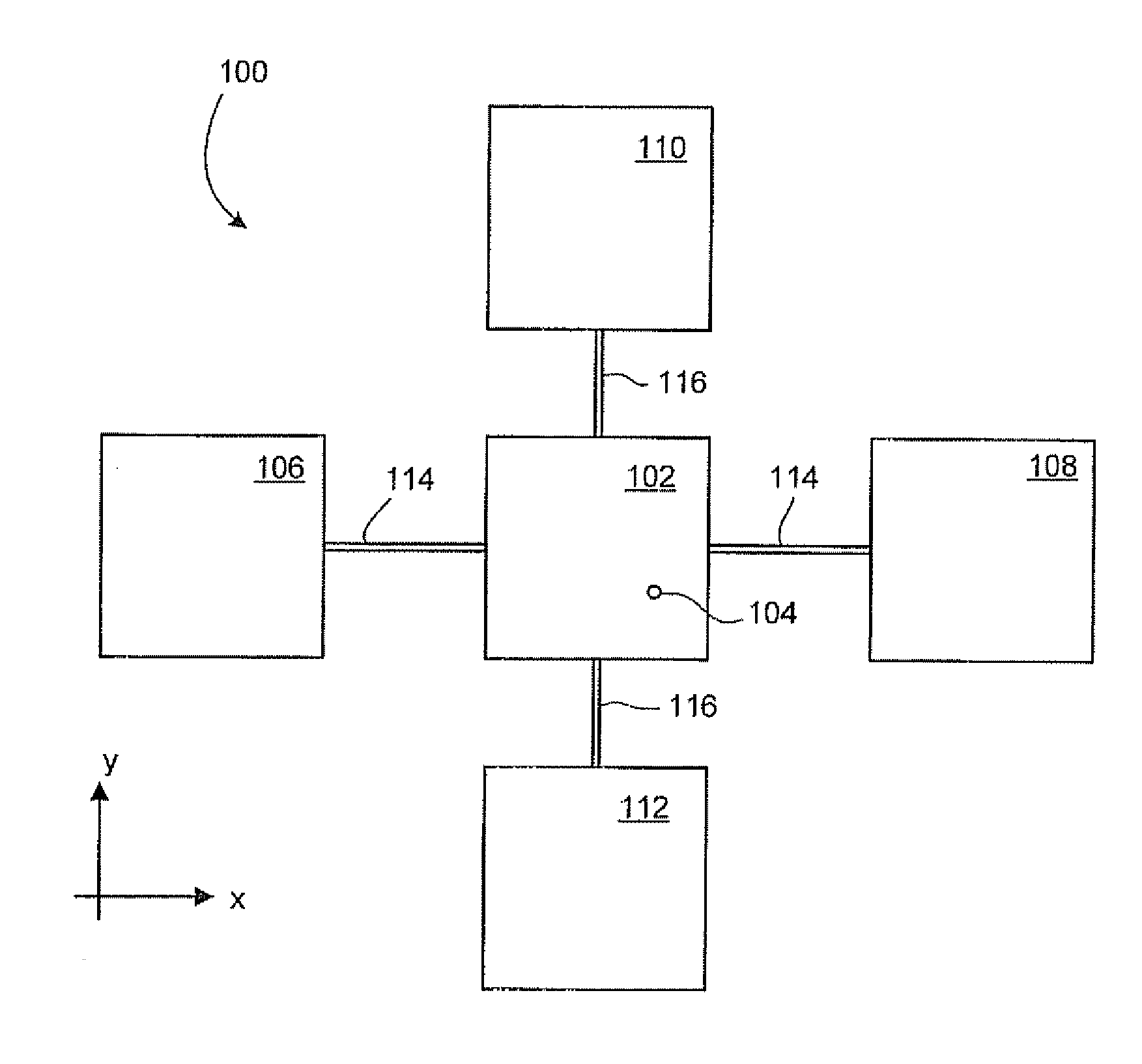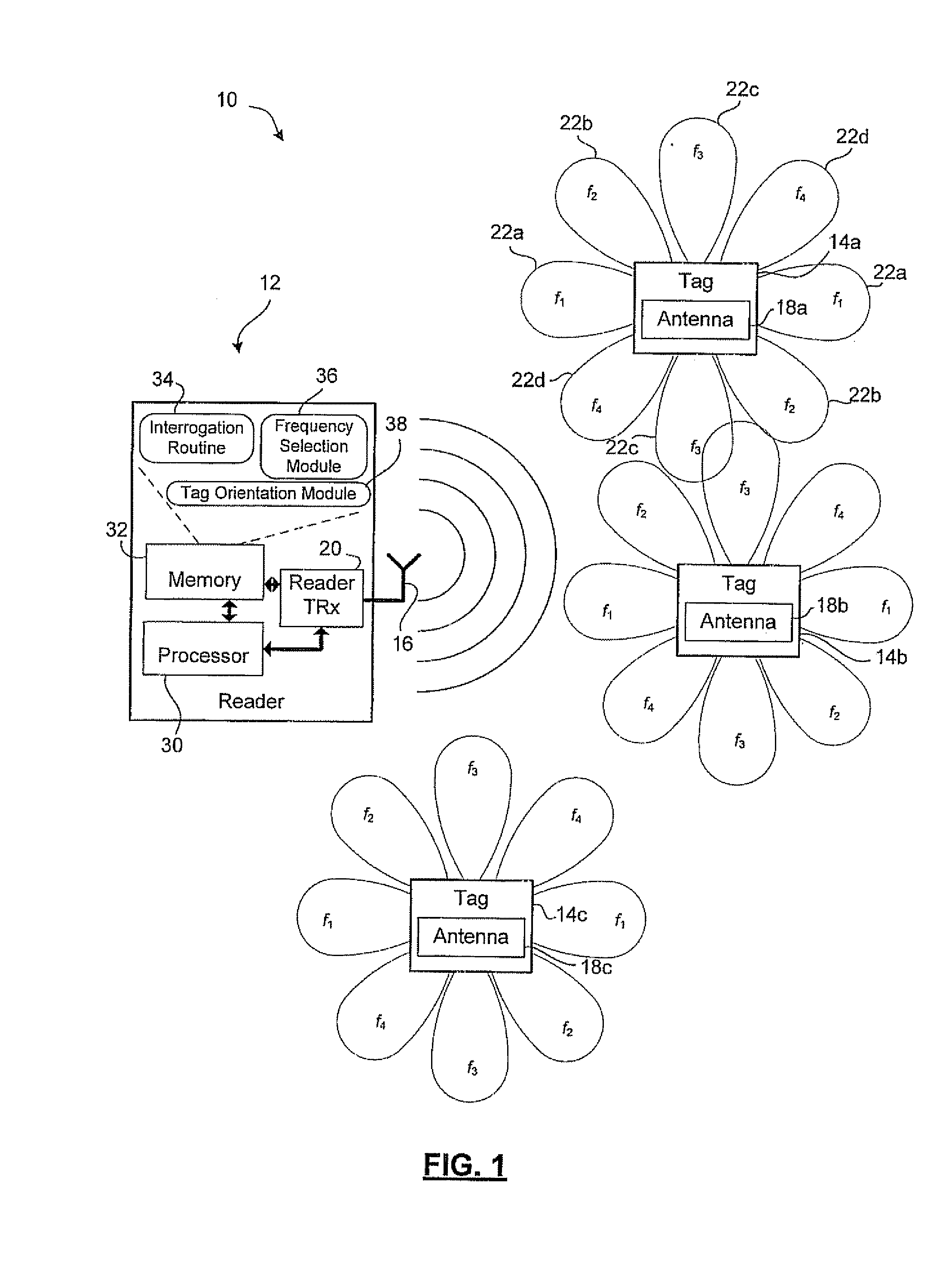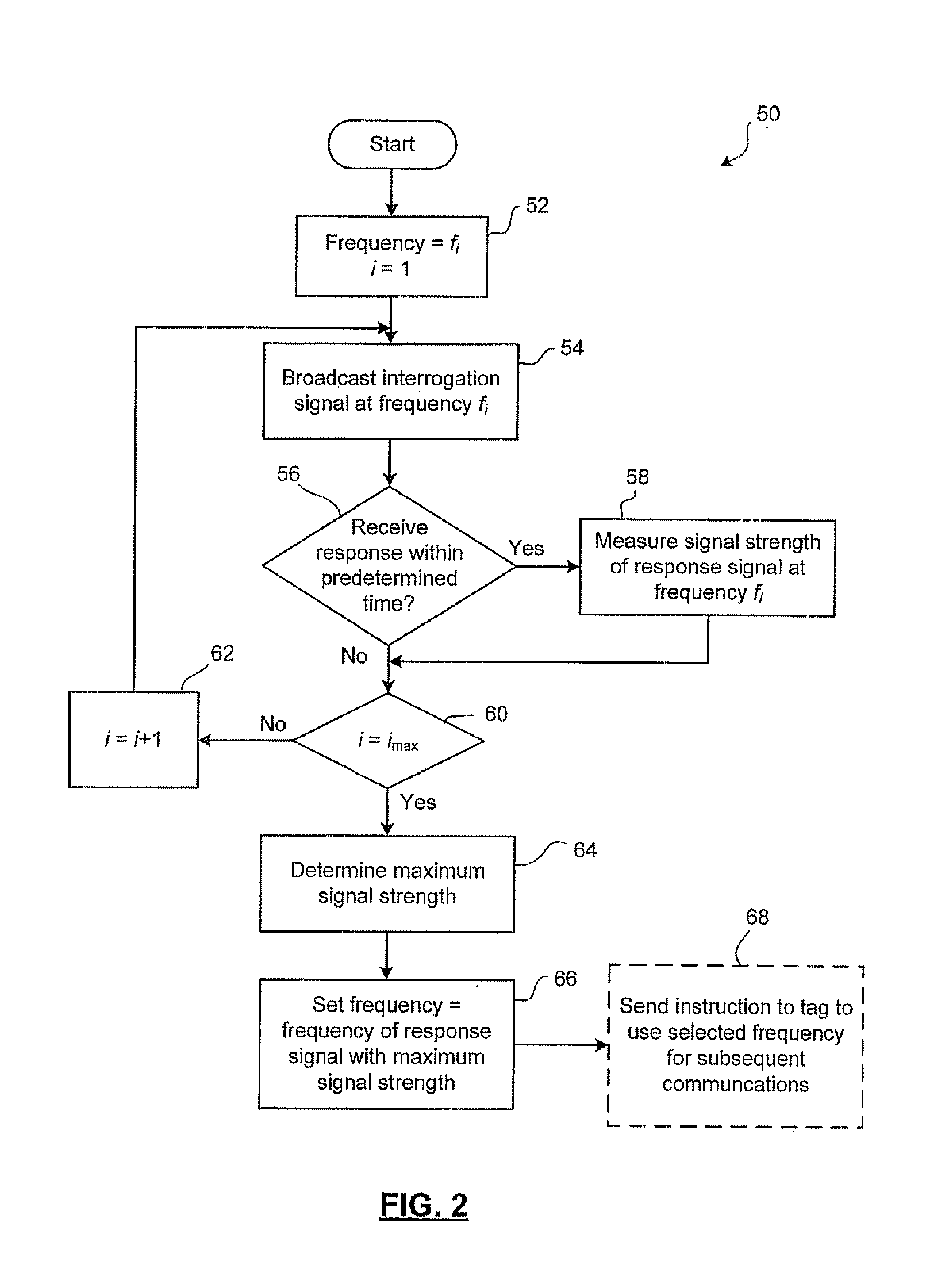Multi-Mode Antenna Array
a multi-mode, antenna array technology, applied in the direction of antennas, antenna details, simultaneous aerial operations, etc., can solve the problems of narrow beam shape, inability to communicate with the antenna, and large range of null areas in which the antenna cannot communicate, so as to achieve greater communication range and expand the range of communication for the tag
- Summary
- Abstract
- Description
- Claims
- Application Information
AI Technical Summary
Benefits of technology
Problems solved by technology
Method used
Image
Examples
Embodiment Construction
[0032]Reference is first made to FIG. 1, which shows an example embodiment of an RFID system 10 according to the present description The system 10 includes a reader 12 and a plurality of tags 14 (shown individually as 14a, 14b, and 14c). The reader 12 and the tags 14 communicate using RF signals In some embodiments the each tag 14 may be attached to or associated with consumer products such as individual articles of clothing, accessories, consumer electronics, household items, etc. The tags 14 may store data regarding the item with which they are associated For example, in some embodiments the tags 14 may store information that conforms to Electronic Product Code (EPC) standards regarding product identification Nevertheless, the present RFID system 10 is not limited to use in connection with tracking inventory items and may be used in any other application of RFID technology
[0033]The reader 12 includes a transceiver 20 and a reader antenna 16. The transceiver 20 and reader antenna 1...
PUM
 Login to View More
Login to View More Abstract
Description
Claims
Application Information
 Login to View More
Login to View More - R&D
- Intellectual Property
- Life Sciences
- Materials
- Tech Scout
- Unparalleled Data Quality
- Higher Quality Content
- 60% Fewer Hallucinations
Browse by: Latest US Patents, China's latest patents, Technical Efficacy Thesaurus, Application Domain, Technology Topic, Popular Technical Reports.
© 2025 PatSnap. All rights reserved.Legal|Privacy policy|Modern Slavery Act Transparency Statement|Sitemap|About US| Contact US: help@patsnap.com



